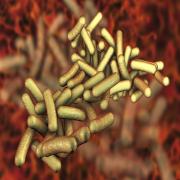Visible light driven, self-cleaning photocatalysts for water treatment and purification
Photocatalysis is a process which uses electromagnetic radiations (EMR) in order to activate catalysis and initiate the chemical reaction. Among all the various advanced oxidation processes it has found wider use from environment to energy application.
So how a photocatalyst Works?
Photocatalyst which is normally a semiconductors (metal oxides such as ZnO, TiO2) with a particular electronic structure and when you irradiate with photons, energy greater than the band gap energy (Eg) of semiconductor excite electron (e‑) from valence band (VB) to conduction band (CB) leaving this hole (h+) highly oxidised. So, if you have organic molecules (micropollutants) that are in contact with the hole it readily oxidise to CO2 and minerals. The most important thing is to make sure the e- and h+ are captured by the targeted molecules (pollutants) immediately, if not then they recombine and there will be no reaction and this is critical to design a good photocatalyst. Majority of work done till now are concentrated on material design. More than 85% of papers on photocatalysis that published are on making materials. We are less aware of surface reaction and process system. So, my contribution to the field is exploring and combining all together.
We are focused on designing visible light driven photocatalyst with high photon efficiency by reducing the recombination of electron–hole pairs with innovative chemistry design; we project our photocatalyst to treat water with natural sunlight instead of UV light and dramatically reduce costs for operators and to make antifouling self-cleaning materials for buildings and coating industries.
We’re also concerned to treat highly contaminated electroplating wastewater (WW) or any source with high loads of metals by using the indigenous metals in the WW as elements that enhance the process efficiency. This is a new and innovative concept in treatment of WW where the metal contaminants participate and accelerate the process for advancing their subsequent removal as well as other contaminants. A novel hybrid process is designed for accelerating visible light catalytic processes by the oxidized/reduced indigenous metals for targeting their removal and other contaminates and utilizes the metals in the sludge as accelerators in enhancing biofuels and biofertilizers yield from metallurgical industry waste water expeditiously.




